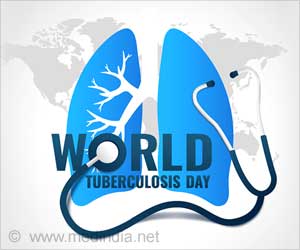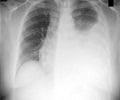What is latent Tuberculosis infection? Latent Tuberculosis is one related condition that occurs when the individual infected with Tuberculosis bacteria does not show any symptoms.

TOP INSIGHT
Many people who have latent Tuberculosis infection either the infection remains inactive for a lifetime or become active, and multiply.
Previous studies have indicated that a higher prevalence of LTBI might occur mainly due to higher incidence and mortality of TB. According to WHO, approximately one-fourth of the world’s population is estimated to be infected with Mycobacterium tuberculosis.
On average, 5–10% of those who are infected will develop active TB disease over their lifetime. In India, the prevalence rate of latent tuberculosis is very high, with around 40% of the population. Now, it’s time to know about the latent TB infection.
What Is True About Latent TB Infection?
- Latent TB occurs after an individual is infected by TB bacteria but does not show symptoms of TB. TB bacteria can remain dormant in the body for a very long time – even decades. In the case of active TB cases, the bacteria reproduce and spread in the body, causing tissue damage.
- Persons with LTBI do not feel sick and do not spread the disease.
- Though infected persons do not manifest the disease, they are at high risk of developing active infection and hence considered a reservoir of TB bacteria.
- Many individuals with high immunity can typically resist the bacteria and prevent them from multiplying. However, if latent TB bacteria become active in the body, the person will develop an active TB infection.
- Several factors such as close contact with people who have active TB, HIV infection, malnutrition, drug use, cancer, diabetes, and weakened immune system can influence the progress from latent TB to active TB disease. HIV infection is the strongest known risk factor for progressing to TB disease.
- The tools used for detecting latent TB cases are the tuberculin skin test (TST) and interferon-gamma release assays (IGRA). However, TST has poor specificity and low sensitivity as it also shows positive for those who have received the BCG vaccine for TB, while IGRA is expensive, and needs specialized instruments, trained personnel, and labs. Aside from sensitivity issues, neither the IGRA nor the TST can reliably differentiate between active TB disease and LTBI, nor can they predict LTBI reactivation.
- The Cy-Tb test is one of the most recent advancements in LTBI diagnosis and is a novel form of the TB skin test.
- LTBI can be treated to prevent active TB disease.
- TB preventive treatment (TPT) is offered to individuals who are at risk of developing TB disease. It consists of a course of one or more anti-tuberculosis medicines. TPT is only given to people who are infected with TB bacteria or are at a higher risk of developing TB disease.
- The management of LTBI should include tracking of LTBI cases, efficient diagnostic methods, effective and safe treatment, and monitoring.
Source-IANS
 MEDINDIA
MEDINDIA




 Email
Email










